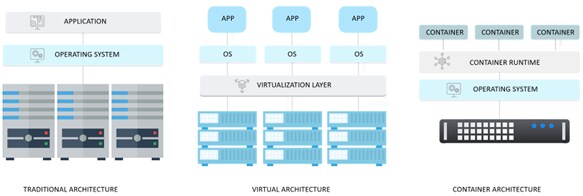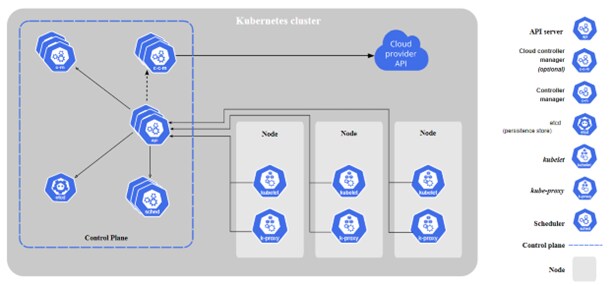Lab of the future: Are we there yet?
In laboratory settings, especially in regulated laboratory settings, we exist in this crossroads of reaching for a better future while being held in place because of various legacy reasons. There is noticeable tension when we talk about artificial intelligence (AI) or robotics; because we want it, but we are afraid of the difficulty.
Around us, in different industries, software has moved on and machines have taken more burden. So, why have we been so limited? Why has it been so hard?
Getting machines to take over complex tasks requires that they be capable of transforming variable inputs from each experience into future decisions similar to the human brain. A definition for AI could be where computers and machines are leveraged to mimic the problem-solving and decision-making capabilities of the human mind1, but the father of computer science would simply ask:
“Can machines think?” – Alan Turing
If we take our design cues from the human brain, it is constrained to a set amount of neurons. The true power and speed of “thought” is composed of a free flow of signals across shared neurons working concurrently.
So how do we translate the system of neurons achieving the speed of thought into how hardware and software could mimic the capacity and ability of the human mind?
The role of computer architecture
Historical computer architecture designs have focused on expanding resources through expanding the hardware. This has included the introduction of server farms working in racked environments and virtualization where many hardware components can be orchestrated together.
These systems have been effective to get us where we were 10 years ago, however as the size of the deployment grows, the system slows down, and spinning up more hardware becomes untenable for cost.

Image credited to [4].
Traditional deployment era – Results in resource allocation issues as data size and software complexity grows
Virtualized deployment era – Distributes processing but is slowed by a loss of resources from each virtualization running all components including its own OS on top of the virtualization software.
Container deployment era – Each container works independently but shares a single point OS making them lightweight, dynamic, and manageable outside of underlying infrastructure.
As laboratories evolve into the next phase of large-file data processing and further tackle the utilization of AI and robotics, the introduction of containerized functions that can run concurrently on shared resources, will become a necessity.
What is Containerization5?
Kubernetes is a next-generation platform for software development. In very short terms it is a resource distribution system that is outcome oriented with four general goals in the programming of each piece6:
- Obtain the desired state
- Observe the current state
- Determine differences
- Reconcile differences
This results in a software design that has a constant drive to reach a goal state, has built-in metrics collection to measure its own success, has the capacity to compare the current state to the goal state, and can self-correct where it has gone wrong; that sounds very familiar to learning.

The components of a Kubernetes cluster [4].
The cluster diagram for a Kubernetes deployment describes the various nodes, pods and components that go into the platform, but the takeaway message is containerization with a resource planner results in optimized resource usage, maximized availability, and reliable fault tolerance.
What about Docker or containerd (pronounced container dee)7?
In overly simplistic terms, if Kubernetes was the operating system on your mobile phone, Docker (or the slimmed-down version containerd) would be the open-source, universal, tool you would use to write apps for it.
Traditional monolithic software was often a complex mess of dependencies that hogged resources because it processed through each function sequentially. This monolithic design gave us programs that reacted slowly, made our computers sound like jet engines when it ran, and when one function was repaired, would break others downstream.
By containerizing software into microservices, we make it not only faster because they can run concurrently, but very mobile, allowing the services to be individually added, removed, updated, or repaired.
So, what is the impact of this new development for labs and future digital solutions?
The state of AI in industry
A positive byproduct of the world-pause during the COVID-19 pandemic, was the amazing jump forward in boundary-defying software usage in science. For instance, Moderna utilized AI8 when designing their vaccine to both support a quick determination of the sequence and to enhance the procedures for production to get this revolutionary therapy to market at a lightning pace.
Moderna isn’t alone and it wasn’t first. Exscientia submitted the first fully AI-designed drug candidate for clinical trials in 2020 with the second in 20219. By February 2022, according to Nature10, the number of AI-designed candidates had reached 160 programs with 15 in the clinic11.
And this only represents AI use in drug design. Amazing strides are also being made in the field of robotic automation by industry leaders like AstraZeneca and their new iLab12 or the cloud-computing-resourced robotic lab at Eli Lilly13 where both want to mechanize the process of development to cut time-to-market in half.
These innovations highlight the foundational shift modern software is making in the industry to provide machine thinking to lab research. The creativity for new realms of software application development will only be accelerated by the shift in software architecture to be more modular and capable of resource sharing. This future is possible, is happening, and will continue to offer unforeseen gains in research as we move forward.
How has this change in environment impacted software development for Thermo Fisher Scientific?
Other than designing software to be more modular in order to gain function and speed out of fewer hardware resources, Thermo Fisher Scientific realizes that containerization of complex software into microservices allows for the evolution of brain-like decision-making. We are in the business of freeing scientists from mundane tasks and supporting them in creative solutions so that they can spend more time on scientific exploration.
Science is more than data management.
Science is more than running instruments in a lab.
Science is meant to search for the truth.
The truth comprises viewing data from multiple angles; compressing, compiling, or presenting it in ways that show trends and help discover hidden meaning.
To power this lab of the future and simplify the aggregation of information, complex data handling deserves a platform with an open-source API environment to enable scientists to design creative solutions and draw from vast amounts of data to study outcomes, build in automation, or be programmed to handle decisions based on its own feedback.
Realize the power of a true cloud-built solution with the Thermo Scientific™ Ardia™ Platform.
Citations
1 What is artificial intelligence (AI)?. www.ibm.com. Retrieved March 28, 2023, from https://www.ibm.com/topics/artificial-intelligence
2Reber, P. (2010, May 1). What is the Memory Capacity of the Human Brain? Scientific American. Retrieved March 2, 2023, from https://www.scientificamerican.com/article/what-is-the-memory-capacity/
3 Kelleher, A. (2022, February 16). Moore’s Law – Now and in the Future. Intel Newsroom. Retrieved March 2, 2023, from https://www.intel.com/content/www/us/en/newsroom/opinion/moore-law-now-and-in-the-future.html#gs.rh0
4(2022, October 24). Kubernetes Components. Kubernetes.io. Retrieved March 2, 2023, from https://kubernetes.io/docs/concepts/overview/components/
5(2019, May 15). Containerization. Ibm.com. Retrieved March 2, 2022, from https://www.ibm.com/uk-en/cloud/learn/containerization
6Poulton, N., & Joglekar, P. (2023). The Kubernetes Book (2023 ed., Chapter 2). ASIN B072TS9ZQZ
7Mittal, A. (2023, January 24). Docker vs Containerd: Container Runtimes Compaired. Knowledgehut.com. Retrieved March 2, 2023, from https://www.knowledgehut.com/blog/devops/docker-vs-containerd
8 (2021, July 13). Podcast Me, Myself, and AI – “AI and the COVID-19 Vaccine: Moderna’s Dave Johnson”. Sloanreview.mit.edu. Retrieved March 2, 2023, from https://sloanreview.mit.edu/audio/ai-and-the-covid-19-vaccine-modernas-dave-johnson/
9 (2021, April 9). Exscientia Announces First AI-Designed Immuno-Oncology Drug to Enter Clinical Trials. Exscientia.ai. Retrieved March 2, 2023, from https://investors.exscientia.ai/press-releases/press-release-details/2021/exscientia-announces-first
10 Jayatunga, M. K., Xie, W., Ruder, L., Schulze, U., & Meier, C. (2022, July 2). AI in small-molecule drug discovery: A coming wave? Natrue.com. Retrieved March 2, 2023, from https://www.nature.com/articles/d41573-022-00025-1
11 Jayatunga, M. K., Xie, W., Ruder, L., Schulze, U., & Meier, C. (2022, July 2). Supplementary Information: AI in small-molecule drug discovery: A coming wave? Natrue.com. Retrieved March 2, 2023, from https://media.nature.com/original/magazine-assets/d41573-022-00025-1/20096834
12 AstraZeneca iLab: The automated lab of the future. https://www.astrazeneca.com/r-d/our-technologies/ilab.html
13 Goodenough, G., Sanford, C., & Hern, K. (2020, January 9). Eli Lilly and Company in Collaboration with Strateos, Inc. Launch Remote-Controlled Robotic Cloud Lab. Lilly.com. Retrieved March 2, 2023, from https://investor.lilly.com/news-releases/news-release-details/eli-lilly-and-company-collaboration-st…
Visit our LinkedIn page
